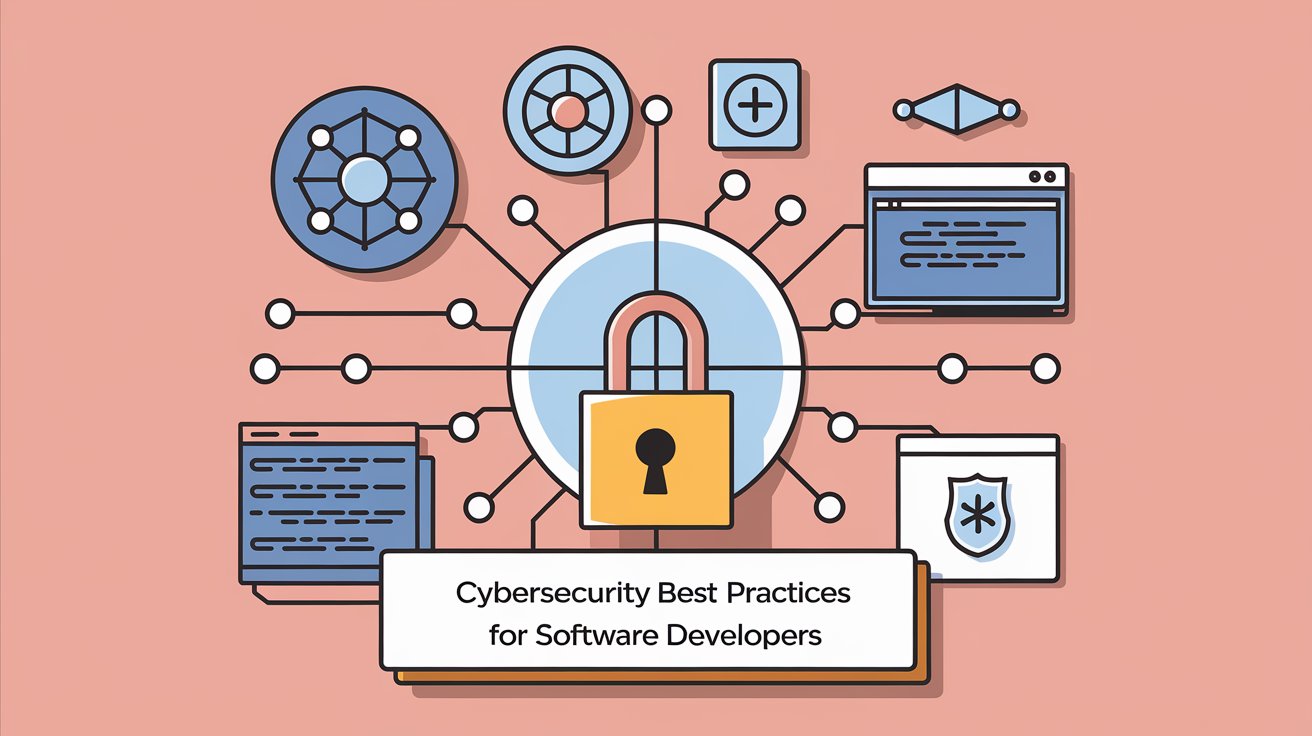
Learn essential cybersecurity best practices for developers to safeguard software and protect sensitive data effectively.
Hey there! Did you know that a whopping 60% of small companies go out of business within six months of a cyber attack? That’s a staggering statistic, and it really highlights just how crucial cybersecurity is for everyone, especially us software developers. In a world where technology is constantly evolving, hackers are always finding new ways to exploit vulnerabilities. So, it’s up to us — the builders of the digital world — to stay ahead of the curve and protect our creations.
Now, I know what you’re thinking. Cybersecurity can seem like a daunting task, full of technical jargon and endless checklists. But trust me, it’s not as scary as it sounds! In fact, with a few best practices under your belt, you’ll be well on your way to creating safer software. I’ve had my fair share of learning experiences (some might call them mistakes), and I’m here to share what I’ve picked up along the way.
In this post, we’ll dive into some of the most effective cybersecurity strategies that developers can implement right away. Whether you’re working on a small app or a massive enterprise solution, these practices are essential for keeping your software secure. So, grab a cup of coffee, and let’s explore the world of cybersecurity together!
Understanding the Basics of Cybersecurity
Alright, let’s start with the basics. Cybersecurity, in its simplest form, is all about protecting computer systems and networks from theft or damage to their hardware, software, or electronic data. But as developers, our focus is more on safeguarding our applications and ensuring that the data they handle is secure.
I remember my first brush with cybersecurity issues — it was during a project where I had to integrate a third-party API. I didn’t think much about security back then, and boy, did I learn the hard way! My app was vulnerable to SQL injection attacks, and it was a nightmare fixing it. That’s when I realized the importance of input validation and parameterized queries. Oh, and let’s not forget about using HTTPS instead of HTTP! That one was a game-changer for me.
So, here’s a tip: always validate and sanitize user inputs. It’s one of those things that might seem pesky, but it’s crucial in preventing attacks like SQL injection and cross-site scripting (XSS). And while you’re at it, make sure your software is always up to date. Hackers love exploiting vulnerabilities in outdated software, so don’t give them the chance!
Trust me, starting with these basics might seem like a small step, but it’s a massive leap toward creating secure software. Once you have a good handle on these, you can move on to more advanced security practices.
Implementing Secure Coding Practices
Now that we’ve covered the basics, let’s get into the nitty-gritty of secure coding practices. You see, writing secure code is more than just a skill — it’s an art. It’s about anticipating potential threats and thinking like a hacker to protect your software from all angles.
I remember when I was working on a web application, I got so engrossed in delivering the features that I completely overlooked some glaring security loopholes. One day, a security expert reviewed my code and pointed out several vulnerabilities. It was a humbling experience, but it taught me the importance of coding with security in mind from the get-go.
One of the best practices is to follow the principle of least privilege. Only grant permissions that are absolutely necessary, and nothing more. It’s tempting to give a user full access, but it’s a huge risk if their account gets compromised. Also, always hash and salt your passwords before storing them. There are so many horror stories about data breaches where passwords were stored in plain text. Don’t let your software be one of them!
And remember, security is a continuous process. Even after you’ve deployed your software, keep testing for vulnerabilities and patching them as they arise. Automated security testing tools can be your best friends here. They help you identify weak spots without having to manually sift through lines of code.
In the end, writing secure code is about being vigilant and proactive. It’s the small things that make a big difference in keeping your software safe from prying eyes.
Importance of Regular Security Audits
Here’s something that might surprise you — regular security audits are not just for big companies with dedicated security teams. They’re for everyone, including small-time developers like us. These audits help us find and fix vulnerabilities before they become a problem.
I’ll admit, I used to think security audits were overkill for my projects. That was until I experienced a minor security breach with one of my apps. It was a wake-up call, and since then, I’ve made audits a regular part of my development cycle. These audits have helped me catch issues I never would have spotted on my own.
During an audit, you want to look at your code from every angle. Check for outdated libraries, review your authentication processes, and ensure your data encryption methods are up to snuff. Don’t forget to audit your third-party integrations too. They can sometimes be the weak link in your security chain.
One practical tip is to use automated tools for these audits. They save time and provide comprehensive reports on potential vulnerabilities. However, don’t rely solely on automation. Manual reviews bring a different perspective and often catch things machines might miss.
The bottom line is, regular security audits are like maintenance for your car. They keep your software running smoothly and securely. And while they might seem like a chore, they’re an investment in the long-term safety of your applications.
Staying Updated with Cybersecurity Trends
Let’s face it, the world of cybersecurity is always changing. New threats emerge every day, and staying updated can feel like a full-time job! But it’s crucial for us developers to keep up with the latest trends and technologies.
I remember the first time I encountered a zero-day exploit. It was terrifying because I had never even heard of it before. That’s when I realized the importance of staying informed. I started following cybersecurity blogs, attending webinars, and even joined a few online communities. These have been invaluable in keeping me in the loop about new vulnerabilities and how to tackle them.
One trend I’ve noticed is the increasing use of machine learning in cybersecurity. It’s fascinating how algorithms can predict and prevent threats based on patterns. While it might seem complex, incorporating AI and machine learning into your security practices can give you an edge.
Another biggie is understanding the implications of the GDPR and other data protection regulations. It’s not just about compliance; it’s about respecting user privacy and building trust.
In the end, staying updated is about being proactive. It’s about learning, adapting, and implementing new strategies to keep your software secure. And remember, you’re not alone. There are tons of resources and communities out there to help you on this journey.
Conclusion
In conclusion, cybersecurity isn’t just a checkbox on your development to-do list; it’s a critical aspect of building robust and trustworthy software. By understanding and implementing the best practices we’ve discussed, you’ll be better equipped to protect your applications and users from potential threats.
Remember, the world of cybersecurity is always evolving, so it’s essential to stay informed and continuously improve your security measures. Don’t hesitate to adapt these practices to fit your specific needs and the nature of your projects. And if you’re ever in doubt, reaching out to the cybersecurity community can provide invaluable insights and support.
So, what about you? Have you had any experiences or tips you’d like to share about cybersecurity in development? Let’s continue the conversation in the comments below. Stay safe, and happy coding!

